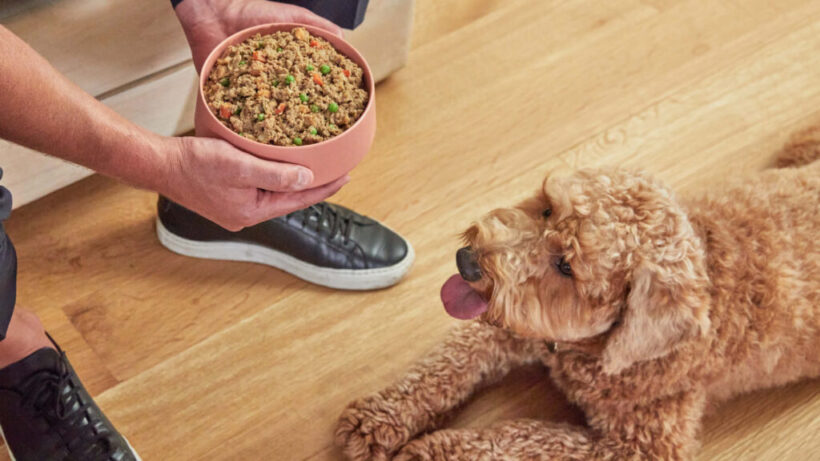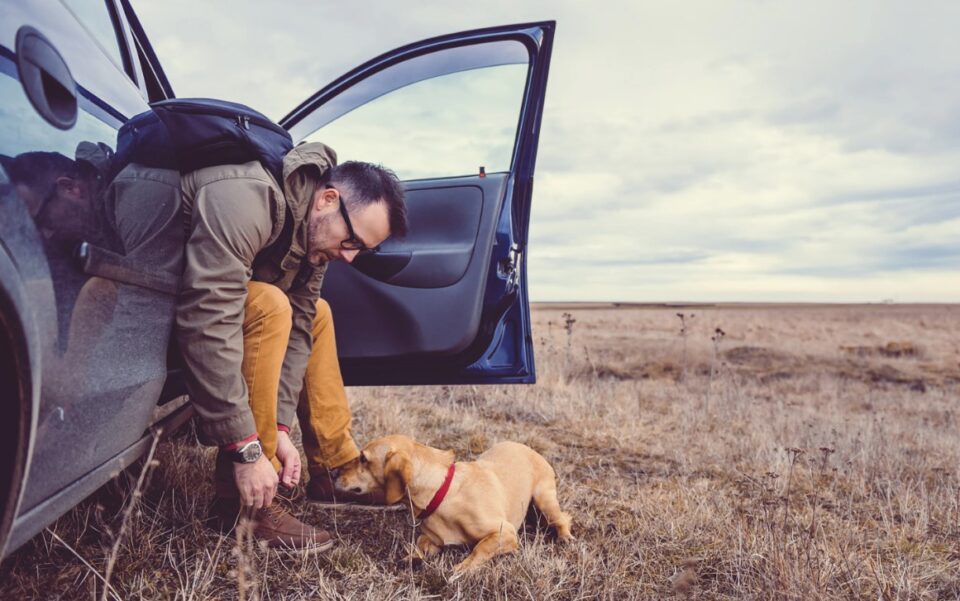Motion sickness often strikes dogs, turning what could be a peaceful car ride into a stressful ordeal. This common issue stems from a mix of motion and anxiety, plaguing both puppies and older dogs.
Understanding why dogs experience this discomfort and finding effective ways to manage it can transform your road trips from anxious to easygoing.
1. Begin with Short Trips
Acclimating your dog to car travel begins with short, simple rides. These brief journeys help your dog adjust to the unfamiliar sensations of motion without overwhelming them. Start by driving around the neighborhood or to familiar places your dog enjoys, like the park or a friend’s house. This not only lessens anxiety but also allows your dog to grow comfortable with the feel of the car.
Gradually lengthen the trips, allowing your dog to develop a positive connection with being in the car. Over time, the short excursions build confidence, reducing the likelihood of nausea on longer drives.
2. Skip the Pre-Ride Meal
A full stomach can worsen nausea, so avoid feeding your dog right before setting off. Eating a large meal shortly before a trip may lead to vomiting as the car’s motion stirs their digestion. Instead, aim to feed your dog several hours before departure, giving them time to process the food.
During longer journeys, offer water during breaks but refrain from heavy feeding until the trip concludes. This reduces the chances of an upset stomach while ensuring your dog stays hydrated and comfortable.

3. Create a Cozy Space
Comfort is key when tackling carsickness. Make your dog’s travel area as calming as possible by bringing along familiar items like their blanket, bed, or favorite toy. This familiar space helps reduce travel-related anxiety, offering a sense of security during the ride.
Keeping your dog secure with a seatbelt or crate minimizes the effects of motion sickness by preventing excessive movement. A stable environment reduces the chances of your dog being jostled, which can trigger nausea.
4. Ventilate the Car
Good airflow inside the vehicle can help alleviate symptoms of carsickness. Cracking the windows slightly can allow fresh air to circulate, balancing the air pressure and easing your dog’s discomfort.
A steady stream of fresh air helps neutralize odors that may trigger nausea. This simple trick can improve your dog’s overall comfort, making the journey more bearable.
5. Plan Breaks for Long Drives
For extended trips, plan for regular stops. These breaks allow your dog to stretch, move around, and breathe in fresh air. Short walks break up the trip’s monotony, giving your dog a chance to shake off nausea.
Offering water during these stops helps your dog stay hydrated without overloading their stomach. The opportunity to stretch and hydrate will leave them feeling more comfortable and better equipped to handle the rest of the journey.
6. Explore Natural Remedies or Medications
For dogs struggling with severe car sickness, natural remedies or medications may offer relief. Ginger is a well-known remedy for soothing nausea in both humans and animals. Small doses of ginger, in treat form or mixed with food, can settle your dog’s stomach before a ride.
For persistent cases, a veterinarian may recommend anti-nausea or anti-anxiety medications. These options can help reduce the physical symptoms of motion sickness and calm the nerves that contribute to it.
7. Reinforce Positive Experiences
To reduce anxiety during car rides, create positive associations with travel. Treats, praise, and rewards go a long way in helping your dog link the car with pleasant experiences. Start by taking them on drives that end in fun activities, like a trip to the park or a favorite hiking spot.
The more positive experiences your dog has in the car, the less stress they will feel. Gradually, they will begin to associate the car with enjoyable outings, reducing their fear and making future trips more pleasant.
A veterinarian can also assess if frequent vomiting due to carsickness is causing dehydration in your dog, which may require immediate treatment. They might prescribe anti-nausea medications or suggest sedatives for both nausea and anxiety relief during car trips.
However, it’s important to avoid giving your dog any medication without consulting a vet first, as improper dosage or inappropriate medications can lead to adverse effects. In some cases, your vet may even recommend natural remedies, such as ginger supplements or calming pheromones, to help your dog feel more comfortable and reduce carsickness during travel.

When to Consult a Veterinarian
If your dog’s carsickness persists even after trying various remedies, it’s crucial to seek professional advice from a veterinarian. Chronic or severe motion sickness can sometimes be linked to more serious underlying health problems, such as vestibular disorders or infections in the inner ear, which a vet can diagnose and treat.
Additionally, if anxiety seems to be the main cause, a veterinarian or a certified animal behaviorist can help with specialized behavior modification techniques. In some cases, medication might be recommended to calm your dog during car rides, ensuring a more comfortable and stress-free travel experience.
Conclusion
Helping your dog overcome carsickness requires patience and a willingness to try different strategies. Whether through gradual exposure to car rides, creating a calming environment, or seeking natural remedies, there are many ways to ease your dog’s discomfort. Positive reinforcement and consistent preparation can help your dog enjoy car rides and reduce anxiety over time.
By finding the right combination of solutions, you can turn stressful trips into smooth adventures, allowing both you and your dog to enjoy the journey.


